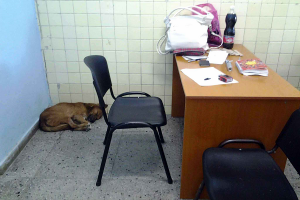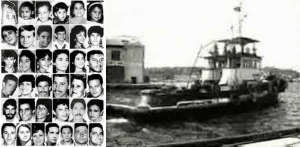
![]() 14ymedio, Julio César Contreras, Cienfuegos, 22 July 2024 — Josefa was a master cigar roller her whole life in Cienfuegos. Old and black, the Cienfueguera knows that she takes on more than she can, since her niece, her only family, emigrated two years ago. “She constantly was saying that she wanted to leave and in the end, she sold her little place and went to Nicaragua,” she says.
14ymedio, Julio César Contreras, Cienfuegos, 22 July 2024 — Josefa was a master cigar roller her whole life in Cienfuegos. Old and black, the Cienfueguera knows that she takes on more than she can, since her niece, her only family, emigrated two years ago. “She constantly was saying that she wanted to leave and in the end, she sold her little place and went to Nicaragua,” she says.
The niece didn’t help her very much, but she kept her company and gave her something to eat when she could. Two years ago, Josefa also had more energy to do “a little work.” Now she is dedicated to reselling what she finds in the garbage dumps or on some corner that can be of use.
Josefa can also be seen sitting in the doorways in front of the Prado. Like her, several men and women of different ages have “taken” the central area of the city, and there they ask for alms, sell what they can and even spend the night on the benches and sidewalks. Beyond the loneliness, the common trait between the old cigar roller and those who accompany her on her way is old age and hunger.
Beyond the loneliness, the common trait between the old cigar roller and those who accompany her on her way is old age and hunger
“My family lived in Santa Isabel de las Lajas. In 1958 we were very poor, but there was always a plate of food to give to someone. Now, however, I have to take what appears when it appears,” confesses the woman, who says her years in the cigar factory, the workers union and being on duty in the Committees for the Defense of the Revolution (CDR) were a waste of time. “People sacrificed a lot to comply, and in the end it was useless.” continue reading
Ten million people live in Cuba, or a little less, as the authorities reported this week. The country has not completed a census for more than a decade, but the tired and old faces of the Island, who have seen the youngest run off and scatter, do not go unnoticed. There are about 10 million people left who have turned the desire to leave into one more need, among the many they experience from day to day.
Humberto’s situation is similar to that of Josefa. A few months ago, of his three grandchildren, the only one left in Cuba ended up leaving for the US under the Humanitarian Parole program. A few years earlier, his own brother left for Mexico, and now his son is preparing the paperwork for Spanish citizenship. “It’s one loss after another. And those of us who have nowhere to go, or are too old to go anywhere, are being left behind,” he acknowledges.
Humberto has thought about doing the same as his son and preparing citizenship papers with him, but one thought stops him: “What is Tony going to do with an old man in Spain or anywhere? In those countries, if you can’t work, you’re a hindrance. It’s better to wait until he does well and can invite me to visit him, if I haven’t died,” he confesses.
“In those countries, if you can’t work, you’re a hindrance. It’s better to wait until he does well and can invite me to visit him, if I haven’t died”
Tony, his son, “is a very good industrial engineer,” says the Cienfueguero. “He graduated with honors and has worked all his life in that profession, but now there is no industry and the salaries aren’t enough. His two daughters also went to Miami. What does he have left here?” he asks.
Humberto and Josefa have seen relatives, neighbors and co-workers disappear over the years. “In Cuba there has always been migration, but never as great as now,” adds Josefa, whose neighbors, a family of six, emigrated last month. “One day I didn’t see them anymore, and when I asked another neighbor she told me they had left with the parole, the six of them!” she recalls.
There are few people left on the Island and more and more homeless. “Whoever has a good profession is looking for a scholarship or a job; whoever has money buys a ticket to Nicaragua, and anyone who has a family also leaves sooner or later. Here there are only left people without family, without resources and without possibilities. And the desperation of knowing that everyone is leaving except you also worries those of us who remain,” Humberto adds. “Without children, without youth or talents, this will soon be an Island of miserable old people.”
Translated by Regina Anavy
____________
COLLABORATE WITH OUR WORK: The 14ymedio team is committed to practicing serious journalism that reflects Cuba’s reality in all its depth. Thank you for joining us on this long journey. We invite you to continue supporting us by becoming a member of 14ymedio now. Together we can continue transforming journalism in Cuba.




















